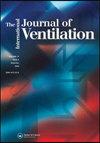Applicability of a simple and new airtightness measuring method and further comparisons with blower door measurements
IF 1.5
4区 工程技术
Q3 CONSTRUCTION & BUILDING TECHNOLOGY
引用次数: 2
Abstract
Abstract The building airtightness is essential to achieve a high energy performance. In most countries however, it is not mandatory to measure the airtightness. In the Netherlands it is common practice to just take several samples in a housing project. These samples do not give a good indication for all the buildings in a project. It is therefore important to measure the airtightness of all the buildings. Current methods for airtightness measuring are too expensive and time consuming to make this feasible. A method with a new device, the AirTightnessTester (ATT), is proposed. By using the buildings ventilation system, a reduction in price and time can be achieved. The ATT measures in compliance with RESNET-380-2016. The ATT makes use of the ventilation system of the building. It will be explained when and how the ATT makes use of a ventilation system. We have looked at the different ventilation systems that are commonly used in new housing projects in somewhat more detail to analyse the feasibility of our method in practice. It is concluded that several systems can be used as they are now. Some ventilation systems cannot be turned on and off easily. For these ventilation systems a setting switching method has been developed. The theory behind this method, and some preliminary results using this method will be presented. To validate measurements with the ATT, comparisons have been done to the blower door. Preliminary results were already presented during the 2018 AIVC conference but further validation was still necessary. The measurements with the blower door are multi-point measurements and are all done in compliance with ISO9972. The measurements done with the ATT are all single-point measurements. The comparisons are made with the blower door, because since it is the most used method for airtightness measuring. To get a fair comparison, the uncertainty of both methods is taken into account. Overall the blower door and the ATT give show similar results for the airtigthness. In 23 of the 37 measurements it was found that the measured air leakage with the ATT was slightly higher than the measurement compared to the result with the blower door. When switching between a low and a high flow, it was found that 10 out of 12 measurements with the ATT were higher.一种简单的新型气密性测量方法的适用性及与风机门测量的进一步比较
摘要:建筑的密闭性是实现高能效的必要条件。然而,在大多数国家,测量气密性并不是强制性的。在荷兰,通常的做法是在一个住房项目中只取几个样本。这些样本并不能很好地说明一个项目中的所有建筑。因此,测量所有建筑物的密封性是很重要的。目前的气密性测量方法过于昂贵和耗时,使其无法实现。提出了一种使用新装置airtightness stester (ATT)的方法。通过使用建筑通风系统,可以实现价格和时间的降低。ATT措施符合RESNET-380-2016。ATT利用了大楼的通风系统。将解释机场何时以及如何使用通风系统。我们更详细地研究了新住宅项目中常用的不同通风系统,以分析我们的方法在实践中的可行性。结论是,有几种系统可以按现有的方式使用。有些通风系统不容易打开和关闭。对于这些通风系统,开发了一种设置开关方法。本文将介绍该方法的原理,并给出一些初步结果。为了验证ATT的测量结果,对风机门进行了比较。初步结果已经在2018年AIVC会议上公布,但仍需要进一步验证。鼓风机门的测量是多点测量,所有测量都符合ISO9972。用ATT完成的测量都是单点测量。与鼓风机门进行比较,因为它是最常用的气密性测量方法。为了得到一个公平的比较,考虑了两种方法的不确定性。总的来说,鼓风机门和ATT给出了类似的气密性结果。在37次测量中的23次中,发现使用ATT测量的空气泄漏量略高于与鼓风机门相比的测量结果。当在低流量和高流量之间切换时,发现ATT的12个测量值中有10个更高。
本文章由计算机程序翻译,如有差异,请以英文原文为准。
求助全文
约1分钟内获得全文
求助全文
来源期刊

International Journal of Ventilation
CONSTRUCTION & BUILDING TECHNOLOGY-ENERGY & FUELS
CiteScore
3.50
自引率
6.70%
发文量
7
审稿时长
>12 weeks
期刊介绍:
This is a peer reviewed journal aimed at providing the latest information on research and application.
Topics include:
• New ideas concerned with the development or application of ventilation;
• Validated case studies demonstrating the performance of ventilation strategies;
• Information on needs and solutions for specific building types including: offices, dwellings, schools, hospitals, parking garages, urban buildings and recreational buildings etc;
• Developments in numerical methods;
• Measurement techniques;
• Related issues in which the impact of ventilation plays an important role (e.g. the interaction of ventilation with air quality, health and comfort);
• Energy issues related to ventilation (e.g. low energy systems, ventilation heating and cooling loss);
• Driving forces (weather data, fan performance etc).
 求助内容:
求助内容: 应助结果提醒方式:
应助结果提醒方式:


